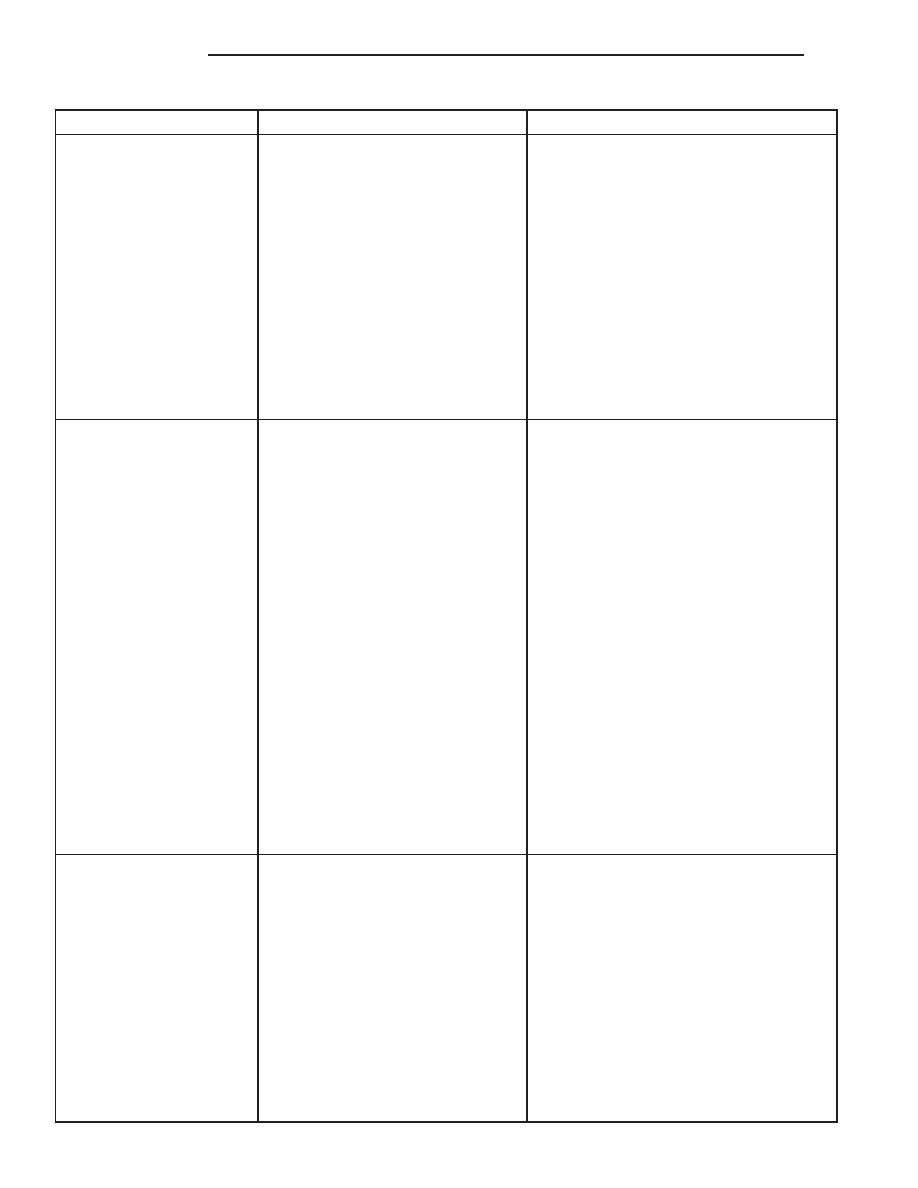Chrysler PT Cruiser. Manual - part 747

CONDITION
POSSIBLE CAUSES
CORRECTION
5. Loose power steering pump drive
belt.
5. Check and replace automatic belt
tensioner as necessary. If drive belt is worn
or glazed, replace belt.
6. Faulty power steering pump flow
control (Follow Power Steering
System Flow and Pressure Test
procedure).
6. Replace power steering pump.
7. Excessive friction in steering
column or intermediate shaft.
7. Isolate and correct condition.
8. Binding upper strut bearing.
8. Disassemble strut assembly. Correct
binding condition in strut bearing or replace
bearing.
9. Excessive friction in power
steering gear.
9. Replace power steering gear.
STIFF, HARD TO TURN,
SURGE, MOMENTARY
INCREASE IN EFFORT
WHEN TURNING.
1. Tires not properly inflated.
1. Inflate tires to specified pressure.
2. Low power steering fluid level.
2. Add power steering fluid as required to
power steering fluid reservoir to obtain
proper level. Check for leaks.
3. Loose power steering pump drive
belt.
3. Check and replace automatic belt
tensioner as necessary. If drive belt is worn
or glazed, replace belt.
4. Lack of lubrication in control arm
ball joints.
4. Lubricate ball joints if ball joints are not a
lubricated for life type ball joint. If ball joint
is a lubricated for life ball joint, replace ball
joint or control arm.
5. Low power steering pump
pressure (Follow Power Steering
System Flow and Pressure Test
procedure).
5. Replace the power steering pump as
necessary.
6. High internal leak in power
steering gear (Follow Power Steering
System Flow and Pressure Test
procedure).
6. Replace power steering gear.
STEERING WHEEL DOES
NOT RETURN TO
CENTER POSITION.
1. Tires not inflated properly.
1. Inflate tires to specified pressure.
2. Improper front wheel alignment.
2. Check and adjust wheel alignment as
necessary.
3. Lack of lubrication in front
suspension control arm ball joints.
3. Lubricate ball joints if ball joints are not a
lubricated for life type of ball joint. If ball
joint is a lubricated for life ball joint, replace
ball joint or control arm.
4. Steering column coupling joints
misaligned.
4. Realign steering column coupling joints.
5. Steering wheel rubbing.**
5. Adjust steering column shrouds to
eliminate rubbing condition.
19 - 6
STEERING
PT
STEERING (Continued)